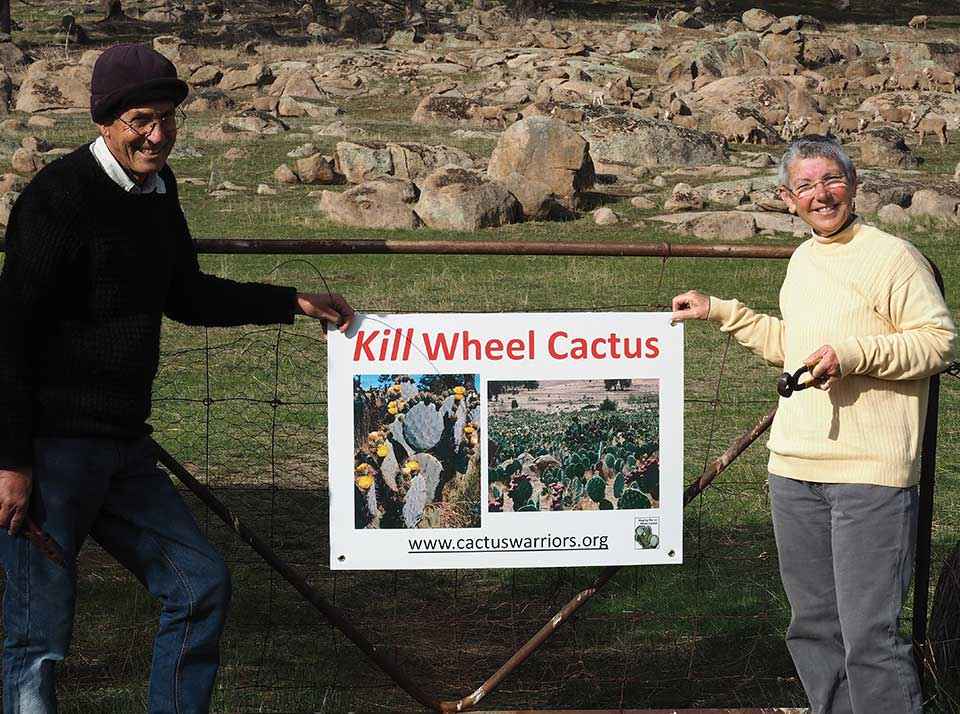Victorian Landcare Magazine - Winter 2018, Issue 72

The cactus warriors of the Tarrangower Cactus Control Group (TCCG) have spent more than 10 years battling wheel cactus around the Maldon, Nuggetty and Baringhup districts of central Victoria.
With funding from the Wettenhall Environment Trust, the group recently completed a project to map wheel cactus sites around Victoria.
To create the map, we tried to find as many records as possible. Existing records came from government departments and the Atlas of Living Australia. But more importantly, we also looked for new locations.
Around 70 per cent of the locations we recorded were new and had not previously been mapped at a state level. Many of these new records came from council officers who have been mapping and treating wheel cactus in their own areas. Other records came from members of the Landcare community who responded to our request for locations.
The project resulted in a map showing infestations widely distributed over Victoria but concentrated in a band running from the northwest of the state, through central Victoria to the north of Melbourne.
Wheel cactus was recorded at a total of 345 sites distributed over 105 localities. There were 237 new records and just over half of these were also new localities. These sites were distributed across 29 Local Government Areas (LGAs). Wheel cactus was identified in seven LGAs that did not have any previous records of the plant.

Above: A new map of wheel cactus across Victoria produced by the Tarrangower Cactus Control Group shows the weed is widely distributed.
For TCCG President Lee Mead, the map is a good starting point for the future manoeuvres of the cactus warriors. While the group has been very successful, Lee says that achieving its ultimate goal of eradicating wheel cactus is proving difficult.
“More strategic and integrated management plans need to be implemented by all private and public land managers within our state,” Lee said.
Wheel cactus seed is readily spread by flocks of ravens that eat the fruit, and also foxes. It only takes a few mature, fruiting plants on properties, parks or roadsides for infesting or re-infesting neighbouring properties to occur.
“Despite having successfully increased the number of local landowners who now quietly go about destroying wheel cactus on their properties, there are still many property owners in our district who ignore their responsibilities to destroy noxious weeds.
“They are frequently absentee landowners and very difficult for our volunteer group to connect with. This means the seed bank is never eradicated and new wheel cactus plants continue to germinate and spread further.”
According to Lee landholders with wheel cactus on their properties need to kill it and do it quickly, before it sets fruit.
To reinforce this message, the TCCG also designed and printed large farm fence signs. Twenty of these signs were distributed to Landcare groups and are now hanging in prominent positions as a warning to other landholders.
The project also involved posting out 1200 information brochures to seven outer localities where the mapping work revealed significant wheel cactus infestations.
The cactus warriors can be contacted through their website www.cactuswarriors.org